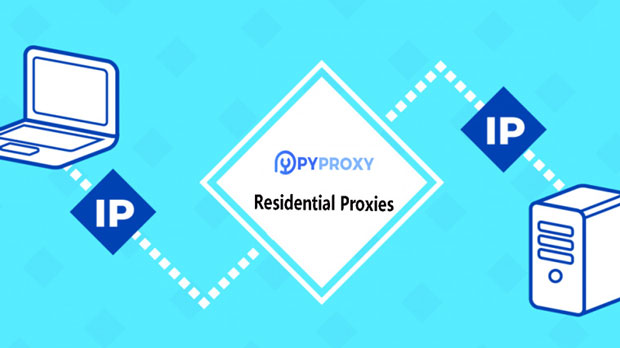What are the advantages of using residential proxy server SOCKS5 for web crawling?
The stability, efficiency, and stealthiness of web crawlers are crucial when conducting web crawling work. With the increasing amount of Internet data, crawler technology has been widely used in all walks of life, including big data analysis, market research, competitor analysis, product pricing, price monitoring, etc. Traditional proxy servers often cannot meet the needs of web crawlers for efficient operation, especially when dealing with anti web crawling mechanisms and IP blocking. The combination of residential proxy and SOCKS5 protocol provides a more reliable solution with significant advantagesThe socks5 proxy protocol, as a flexible and efficient network proxy protocol, when used in conjunction with residential proxies, provides crawlers with higher anonymity, stability, and scalability. Compared with other proxy protocols, SOCKS5 can handle a wider range of network traffic, support multiple protocols such as TCP and UDP, and does not modify data streams, effectively avoiding many limitations of traditional proxy servers. Residential proxy servers further enhance the stealthiness of web crawlers by routing user traffic to real home IP addresses. Combining these two can effectively solve common problems encountered by web crawlers, such as frequent IP bans, access restrictions, and speed bottlenecksThis article will analyze in detail the advantages of using residential proxy servers and SOCKS5 protocol for web crawling from several aspects, helping crawler developers better choose suitable tools, improve data crawling efficiency, and reduce the risk of being banned1. Basic Concepts of Residential Proxy Server and SOCKS5 Protocol Before discussing the advantages of residential proxy servers and SOCKS5 protocol, it is necessary to first understand their basic concepts1.1 Residential Proxy ServerResidential proxy refers to a server that provides proxy access through an IP address assigned by a real home network. Unlike data center agents, residential agents usually come from regular home networks, so their IP addresses have high credibility and concealment. These IP addresses are not easily recognized as "proxy IPs" like data center proxies, so they can more effectively bypass the anti crawling mechanisms of many websites1.2 SOCKS5 protocolSOCKS5 is an advanced network protocol that supports multiple network communication protocols, including TCP and UDP. Unlike traditional HTTP proxies, SOCKS5 is capable of transmitting a wider range of traffic, including FTP, SMTP, etc., making it suitable for various application scenarios. SOCKS5 proxy not only does not modify the data flow, but also provides stronger security and flexibility, making it an ideal choice for efficient crawling operations2. The advantages of using residential proxy server SOCKS5The combination of residential proxy servers and SOCKS5 protocol can bring a series of significant advantages, especially in web crawling, which can effectively improve the concealment, stability, and efficiency of web crawlers. Here are a few key advantages:2.1 Enhance concealment and avoid IP bansMost websites have implemented anti spider mechanisms to block abnormal traffic by identifying IP addresses. Traditional proxy IPs usually come from data centers and are easily recognized and banned by websites. Unlike this, the IP address provided by the residential proxy server comes from the real home network and is extremely difficult to identify as a proxy IP. Therefore, using residential proxy servers can effectively avoid IP blocking and prevent web crawlers from being blocked by websitesIn addition, the SOCKS5 protocol itself has stronger concealment because it does not modify the data flow, and all data remains unchanged, thereby reducing the possibility of detection. This allows crawlers to bypass anti crawling mechanisms and perform more stable data scraping during long-term operation2.2 Improve the stability and success rate of web crawlersFrequent IP bans and website restrictions can greatly affect the stability and efficiency of large-scale web crawling. By using residential proxies and SOCKS5 protocol, crawlers can rotate multiple IP addresses, reducing the frequency of requests for the same IP and avoiding being banned. This approach not only improves the stability of the crawler, but also significantly increases its success rate, ensuring the continuity and efficiency of data crawling2.3 High flexibility and scalabilityThe flexibility of SOCKS5 protocol enables it to adapt to different types of traffic requirements during data capture, whether it is HTTP, FTP or other protocols, SOCKS5 can easily handle them. This high flexibility allows web crawler developers to customize different crawling strategies according to their needsMeanwhile, the scalability of residential agents also provides web crawlers with more choices. By accessing thousands of residential IPs, crawlers can cover more target websites and perform large-scale data scraping without easily encountering bans or restrictions2.4 Avoid conflicts with firewalls and anti spider technologiesMany websites not only use IP address detection crawlers, but also use multidimensional data such as user behavior and request frequency to determine whether they are automated tools. Traditional proxy IPs are often detected as abnormal traffic, but residential proxy traffic comes from real user networks, making it easier to pass through website behavior analysis and firewallsCombined with the SOCKS5 protocol, crawlers can use various advanced strategies (such as dynamic IP switching, proxy pool management, etc.) to simulate real user behavior and avoid conflicts with website anti crawling techniques3. Specific application scenarios of SOCKS5 residential proxy serverThe advantages of using residential proxy servers and SOCKS5 protocol are not limited to web crawling technology. Here are several typical application scenarios that demonstrate how this technology can be effective in practical work3.1 Competitor MonitoringIn market competition, real-time monitoring of competitors' website content, prices, promotional activities, etc. is very important. By using residential agents and SOCKS5 protocol, it is possible to efficiently capture a large amount of web information without being detected by competitors, while avoiding IP bans caused by frequent access. This is of great significance for price monitoring, product pricing, and market dynamics analysis3.2 E-commerce Data CollectionMany e-commerce platforms use anti spider technology to protect their product information, prices, inventory, and other data. Crawler developers need to use high-quality proxy IPs to avoid being banned by e-commerce platforms during the crawling process. Residential agents can provide more authentic IP addresses, enabling web crawlers to smoothly capture this data, and combined with the flexibility of the SOCKS5 protocol, can support more complex data collection needs3.3 Advertising Monitoring and Brand ProtectionAdvertising monitoring and brand protection are another widely used task of web crawling technology. Enterprises need to regularly monitor the effectiveness of advertising placement and whether brand information has been stolen. Through residential agency and SOCKS5 protocol, enterprises can effectively capture advertising content and monitor brands, ensuring the accuracy and stability of data capture4. How to choose a suitable residential agent and SOCKS5 serviceAlthough residential agents and SOCKS5 protocol provide many advantages, choosing the right service provider is still the key to ensuring the efficient operation of crawlers. Here are several selection criteria:4.1 IP Quality and DistributionThe quality of IP is crucial when choosing residential agency services. High quality IP addresses require fewer blacklist records and come from multiple geographic locations and network providers. Through this distributed IP pool, crawlers can switch IPs more flexibly and avoid being recognized as crawlers by target websites4.2 Bandwidth and SpeedWeb crawlers require a large amount of bandwidth and high-speed network connections, especially when performing large-scale crawling, network latency and bandwidth bottlenecks may seriously affect efficiency. Choosing a proxy service provider with high bandwidth and low latency can ensure the efficient and stable operation of the crawler4.3 Scalability of ServicesThe scale of crawler tasks usually changes with the increase of data demand, so it is important to choose a proxy service that can be flexibly expanded. Ensure that the selected service provider can provide a large number of IP addresses and support dynamic proxy switching and efficient proxy pool managementConclusionUsing residential proxy servers and SOCKS5 protocol for web crawling can not only improve the stealthiness and stability of the crawler, but also effectively avoid IP blocking and improve crawling efficiency. With the continuous development of anti crawler technology, crawler developers need to constantly update tools and strategies, choose appropriate proxy services and protocols to ensure that crawlers can run stably in complex network environments. Therefore, the reasonable use of residential agents and SOCKS5 protocol has significant value in improving the success rate and efficiency of data capture. When choosing proxy services, developers should consider IP comprehensively based on their needs
2024-12-17
























































